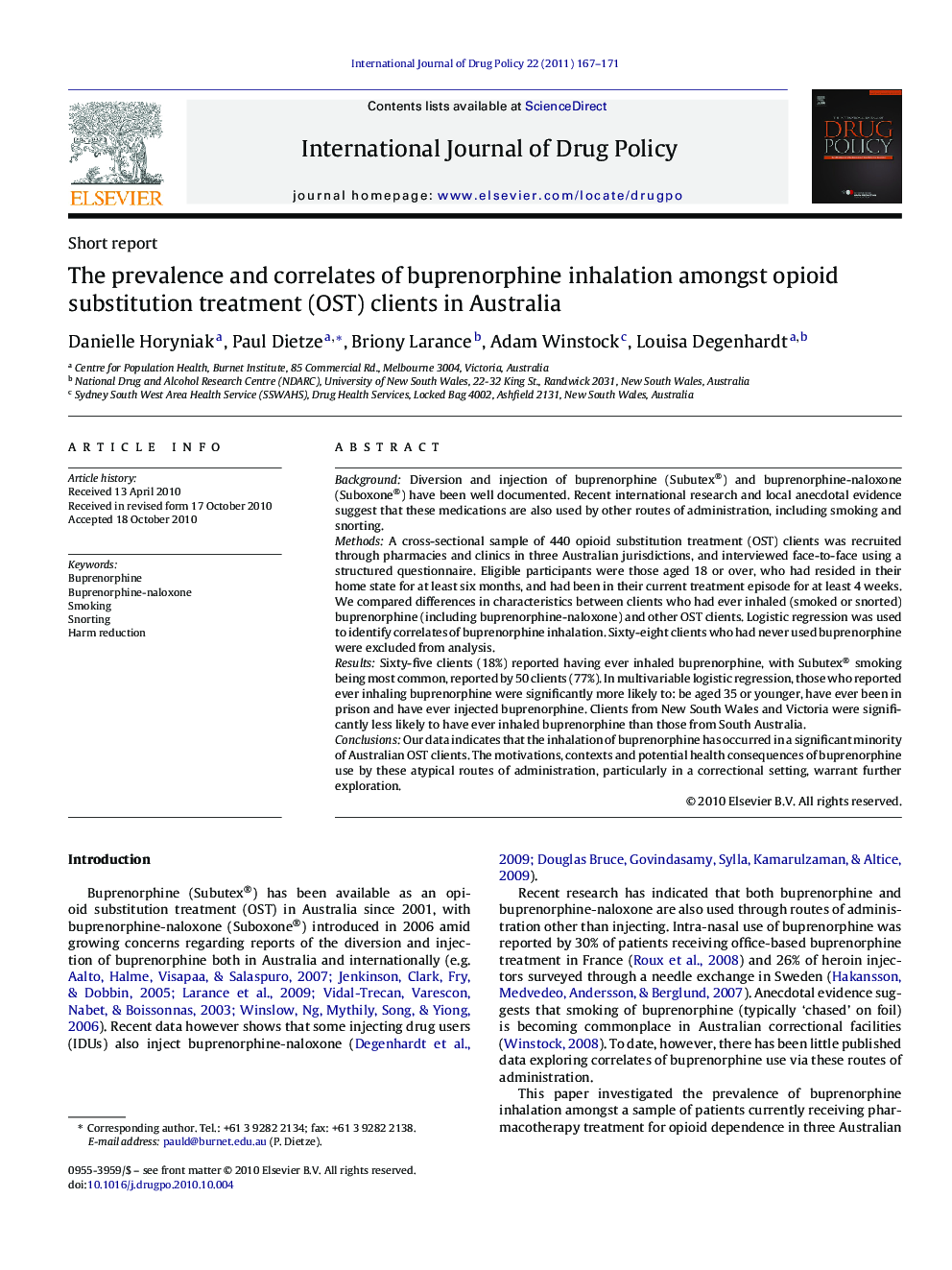| Article ID | Journal | Published Year | Pages | File Type |
|---|---|---|---|---|
| 1075653 | International Journal of Drug Policy | 2011 | 5 Pages |
BackgroundDiversion and injection of buprenorphine (Subutex®) and buprenorphine-naloxone (Suboxone®) have been well documented. Recent international research and local anecdotal evidence suggest that these medications are also used by other routes of administration, including smoking and snorting.MethodsA cross-sectional sample of 440 opioid substitution treatment (OST) clients was recruited through pharmacies and clinics in three Australian jurisdictions, and interviewed face-to-face using a structured questionnaire. Eligible participants were those aged 18 or over, who had resided in their home state for at least six months, and had been in their current treatment episode for at least 4 weeks. We compared differences in characteristics between clients who had ever inhaled (smoked or snorted) buprenorphine (including buprenorphine-naloxone) and other OST clients. Logistic regression was used to identify correlates of buprenorphine inhalation. Sixty-eight clients who had never used buprenorphine were excluded from analysis.ResultsSixty-five clients (18%) reported having ever inhaled buprenorphine, with Subutex® smoking being most common, reported by 50 clients (77%). In multivariable logistic regression, those who reported ever inhaling buprenorphine were significantly more likely to: be aged 35 or younger, have ever been in prison and have ever injected buprenorphine. Clients from New South Wales and Victoria were significantly less likely to have ever inhaled buprenorphine than those from South Australia.ConclusionsOur data indicates that the inhalation of buprenorphine has occurred in a significant minority of Australian OST clients. The motivations, contexts and potential health consequences of buprenorphine use by these atypical routes of administration, particularly in a correctional setting, warrant further exploration.
